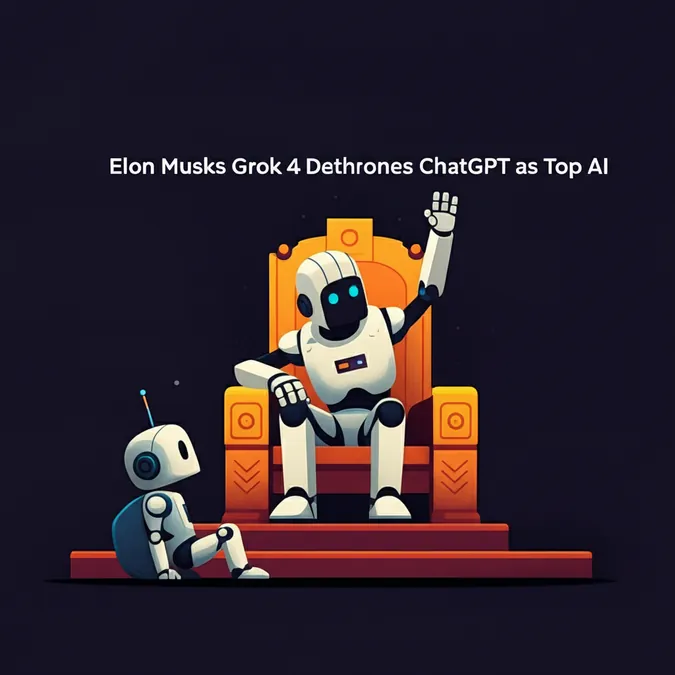Developer Offer
Try ImaginePro API with 50 Free Credits
Build and ship AI-powered visuals with Midjourney, Flux, and more — free credits refresh every month.
Automate Your Job With ChatGPT And Reclaim Your Time
Are you tired of grinding through tasks that a robot could easily handle, while your dream vacation remains just a screensaver? It's time to work smarter, not harder. You can transform your long workdays into efficient sprints by leveraging the power of AI. The tools are here, and the potential is real. Let's explore a clear roadmap to slash your working hours and reclaim your life.
Here are five steps, complete with ChatGPT prompts, to help you delegate your workload to AI. For the best results, use the same chat window for all prompts so ChatGPT retains the context of your conversation.

Step 1: Identify Your Automatable Tasks
To find your freedom, you first need to know where your time is going. For one full week, track every single work activity—every email, meeting, and task. Assign a complexity rating from 1 to 10 to each one. The tasks with low scores are your ticket to automation. Get crystal clear on your daily grind by using this prompt in ChatGPT:
"Based on what you know about my work from our previous conversations, help me identify which of my daily tasks could be automated or streamlined with AI. First, ask me to list my main work activities from this week. Then, for each task I mention, rate its automation potential on a scale of 1-10 and explain why. Focus on tasks rated 5 or below as immediate opportunities. Create a prioritized list of 3 tasks I should automate first, with specific AI tools or methods for each. Ask for more detail if required."
Step 2: Get Your AI Automation Blueprint
With your priority list in hand, it's time to take action. Start with tasks that don't require your unique voice or personality—save things like your personal LinkedIn comments for later. Focus on the soul-crushing administrative work, mind-numbing data entry, and time-consuming research. Ask ChatGPT to build you a step-by-step guide for automation.
"I want to use AI to handle [describe a specific repetitive task from your work]. Based on what you know about my business and working style, create a step-by-step guide for automating this task while maintaining quality. Include: specific AI tools to use, exact prompts or workflows to implement, potential pitfalls to avoid, and how to maintain a human touch where needed. Make this actionable enough that I could implement it today. Ask for more detail if required."
Step 3: Create Urgency with a Deadline
Parkinson's Law states that work expands to fill the time available for its completion. Use this to your advantage. Create real pressure by booking that trip you've been dreaming of. When I booked a five-week trip to Australia, it became the ultimate deadline, forcing me to innovate and automate with urgency. Readiness doesn't come from waiting; it comes after you book the flight. Use this prompt to make it happen:
"Based on what you know about my work schedule and commitments, help me plan a vacation that forces me to streamline my operations. Ask me about my dream destination and preferred travel dates. Then create a reverse timeline showing exactly what I need to automate or delegate before I leave. Include weekly milestones, specific systems to implement, and contingency plans. Make this timeline aggressive but achievable. Ask for more detail if required."
Step 4: Redesign Your Role Around Your Strengths
Let AI handle the routine so you can handle the remarkable. Once automation takes over the mundane, your role should transform. You'll focus on strategy, building relationships, and driving creative breakthroughs. Too many people cling to busywork because it feels like progress, but true achievement is what transforms you. Redefine your work around your unique human genius with this prompt:
"Based on our conversation history about my work and the tasks I want to automate, help me redesign my role for maximum impact. First, list all the tasks AI will handle based on our previous discussion, with a timeline for when each could be in place. Then identify what remains that only I can do. Create a new 'job description' for myself that focuses on these high-value activities. Include how my daily schedule would look and what success metrics I should track. Ask for more detail if required."
Step 5: Design Your New Freedom-Focused Schedule
Old habits die hard, and newfound free time can easily be filled with meaningless tasks if you aren't intentional. Design your new ideal workday, whether it's a 3-hour morning sprint or a 5-hour day. Block out time for deep work, schedule breaks, and guard your boundaries fiercely. Get addicted to elimination and create a routine that prioritizes freedom.
"Based on everything we've discussed about automating my work, create my new weekly schedule assuming I only work [specify number] hours per day. Include: specific time blocks for remaining human tasks, buffer time for unexpected issues, designated hours for checking automated systems, and protected time for [personal priorities]. Show me what this looks like Monday through Friday. Then suggest 3 rules I should follow to maintain these boundaries. Ask for more detail if required."
Your New Reality Awaits
The traditional 8-hour workday is a relic. You have the skills and tools to build a better reality. By tracking your time, identifying automation opportunities, and redesigning your role, you can create AI-powered systems that work for you. Freedom begins with a single automated task. Your future self is already living this life—it's time for you to catch up.
For more powerful prompts, you can access a full library of ChatGPT content prompts.
Compare Plans & Pricing
Find the plan that matches your workload and unlock full access to ImaginePro.
| Plan | Price | Highlights |
|---|---|---|
| Standard | $8 / month |
|
| Premium | $20 / month |
|
Need custom terms? Talk to us to tailor credits, rate limits, or deployment options.
View All Pricing Details

